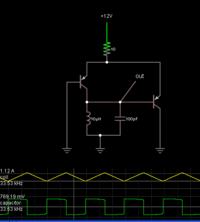uoficowboy
Full Member level 3
- Joined
- Apr 4, 2009
- Messages
- 169
- Helped
- 6
- Reputation
- 12
- Reaction score
- 5
- Trophy points
- 1,298
- Location
- Seattle, Wa, USA
- Activity points
- 2,964
Hi - I have an inductor with a SRF around 1-10 MHz. I would like a circuit that can drive that inductor with a large amount of current at its self resonant frequency. I am still working on specifics, but the inductor will probably have an inductance of around 10-100uH. Driving voltage will probably be 12V or 24V.
I have seen many single transistor oscillator circuits that use an LC tank to set the oscillating frequency. These are perfect, except that they are driving very small amounts of current into the LC tank. I'm looking for much larger driving current, as this is to be used in a resonant wireless charging system. I'm thinking I'll have to drive the inductor with an H bridge, but I'm having trouble picturing the proper way of driving the bridge itself.
Does anybody have any suggestions?
Thanks!!
I have seen many single transistor oscillator circuits that use an LC tank to set the oscillating frequency. These are perfect, except that they are driving very small amounts of current into the LC tank. I'm looking for much larger driving current, as this is to be used in a resonant wireless charging system. I'm thinking I'll have to drive the inductor with an H bridge, but I'm having trouble picturing the proper way of driving the bridge itself.
Does anybody have any suggestions?
Thanks!!
